mhardy6647
Grand Contributor
- Joined
- Dec 12, 2019
- Messages
- 11,408
- Likes
- 24,763
That reminds me of my 5D classic- 12 megapixels in all its glory. Didn't swap it for something new until I needed video nearly a decade later. Doesn't matter if you're printing or going straight to web, you don't need more than a couple megapixels. When the first digital cameras came out, they were under 3 megapixels (D1 = 2.7) and did everything from newspapers to advertising. You don't zoom in when looking at prints...You can, but with some loss of convenience, I expect.
I don’t know how they would look to pixel peepers using a 100-megapixel sensor in all cases. But I look on that the same way I do people who sell a DAC with a SINAD of 115 dB to buy on that’s 120 dB, and then judge it through real speakers in a real room. For the size actual prints any pro would make using medium format, they are excellent.
Rick “whose 645z still fulfills all his requirements and then some” Denney
I have one of those Zenitar fisheyes in a Canon mount. Stop that puppy down! It’s a mess at wide apertures.One of the AK stalwarts kindly passed along a trio of Zenit SLR bodies (K-mount) and a couple of lenses, including a nifty little fisheye, to my son quite a few years back. We were able to get one of the bodies to function more or less properly and he (my son, that is) got his first taste of super-wide-angle lenses with it. I think he was still in high school @ the time.
View attachment 185299
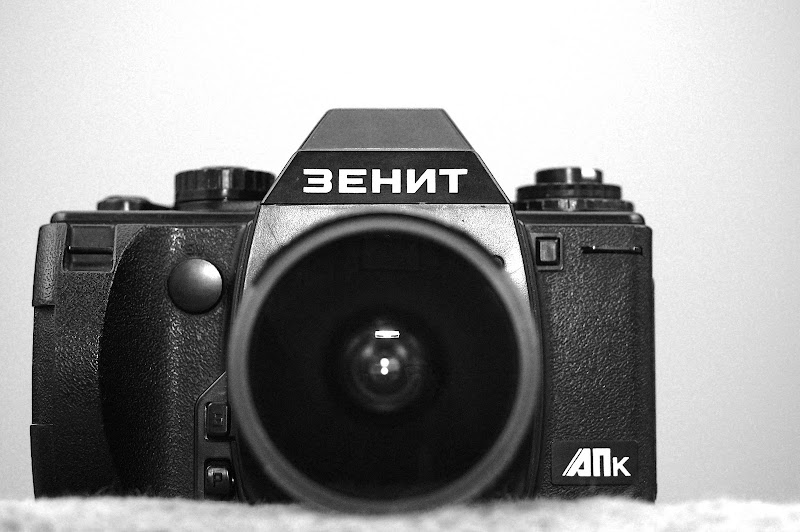
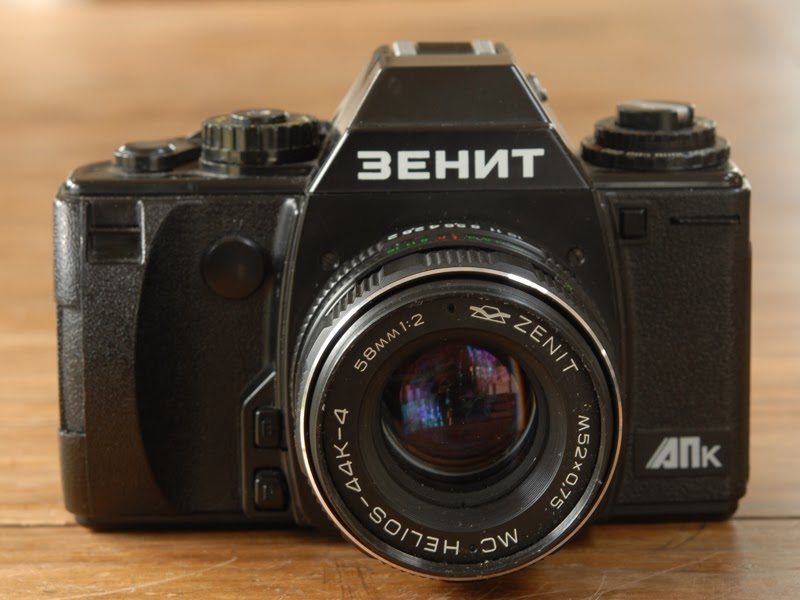
Zenit APk with MC Helios-44K-4 58mm f/2
Camera: Zenit APk circa 1992-1998?! Lens mount: Pentax K-mount (bayonet) Shutter: electronic, 1 - 1/2000s plus bulb. Manual and ap...icouldbeahero.blogspot.com
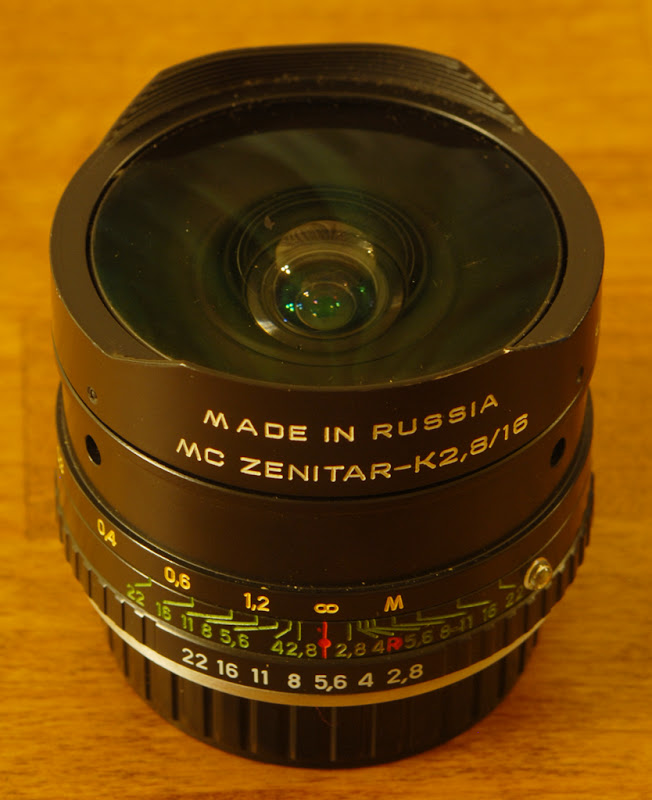

MC Zenitar 16mm f/2.8
MC Zenitar 16mm f/2.8 Filter size: 26.5mm x 0.5 (rear mount) Close focus: 0.3 meters Aperture range: f/2.8 - f/22 Depth of field scal...icouldbeahero.blogspot.com
There must a whole category of humanity to which the above outline applies with surprisingly little variation, and we are all members of it.I thought I'd mentioned this little rascal -- but apparently I haven't.
So, way, way way back when (eighth grade), one of my classmates received from his father (a Merchant Marine captain) a Minolta SR-T101... and our class's camera craze was off and running. We also had a teacher who was a photography buff ("Honeywell" Asahi Pentax Spotmatic F -- M42 mount, in those days).
Another classmate acquired a Bell & Howell (Canon) SLR: the Bell & Howell Auto 35/Reflex Design 237 (a/ka/ Canon EX EE). This is a rather peculiar little camera in that the lens is fixed, but the outer elements are removable. A moderate WA and a moderate tele were available for it.
Now, the nice thing about this Bell & Howell was that a catalog retailer called W. Bell & Company (which had a store in Baltimore) carried these cameras at an attractive discount price. I kind of fixated on wanting one of these -- but, as already mentioned, my parents got me the 500TL as a Christmas present and I was off to the races, so to speak
At any rate, I was always kind of fascinated by this model, and my son picked one up, with accessory lenses, somewhere along the line and... well... it's here now. He quite liked it, as it happens.


This Old Camera: Bell & Howell Auto 35/Reflex Design 237
Bell & Howell Auto 35/Reflex Design 237 AKA Canon EX EE Camera type: 35mm SLR Lens Mount: The rear 3 elements of the lens are fixe...icouldbeahero.blogspot.com

I ended up getting involved in photography for our yearbooks (starting in 1973) and having an M42 camera turned out to be a good choice, as "we" could platoon lenses with the aforementioned teacher (who was also the yearbook advisor) with the Pentax.
Miranda
I just met a camera named Miranda...

Judging by the detached lens pictured, it looks as though this Miranda had an internal lens stop-down mechanism.
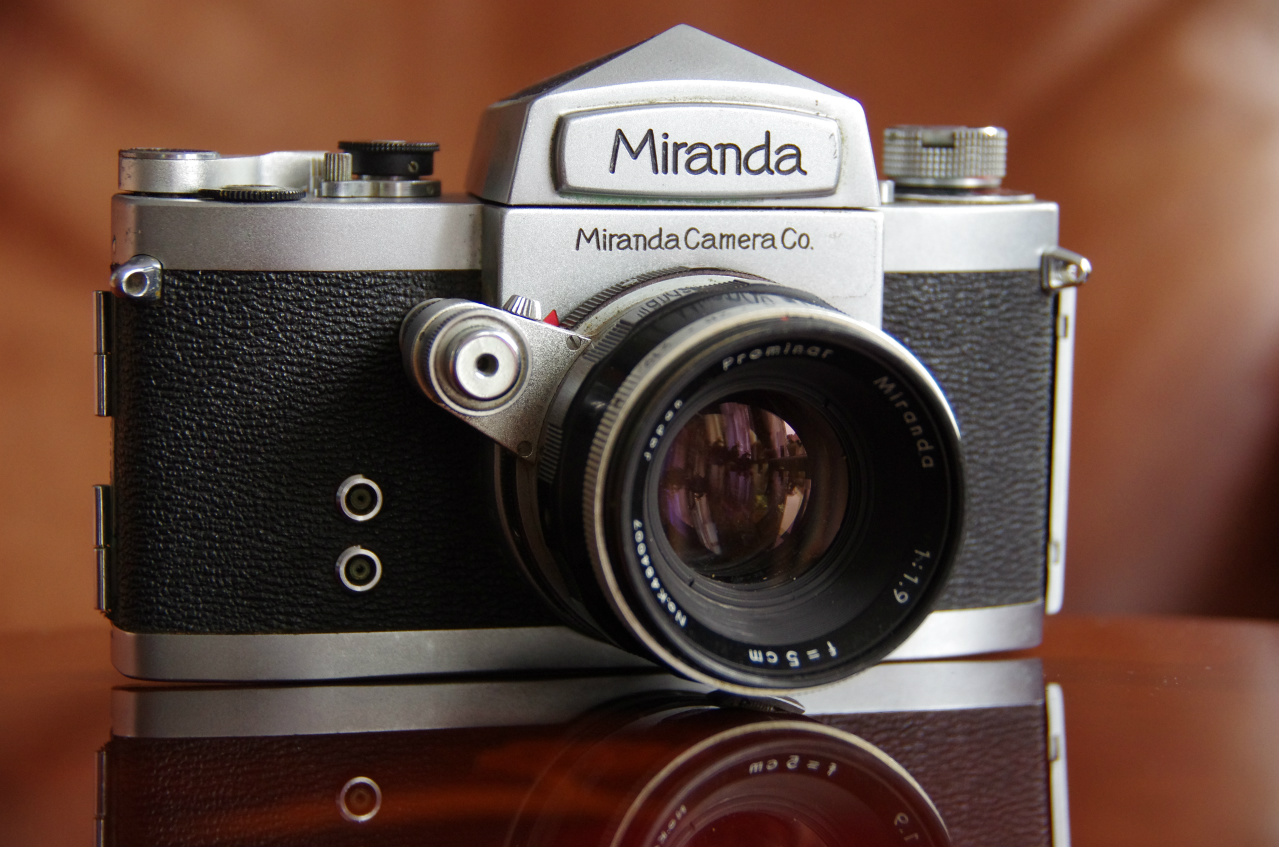
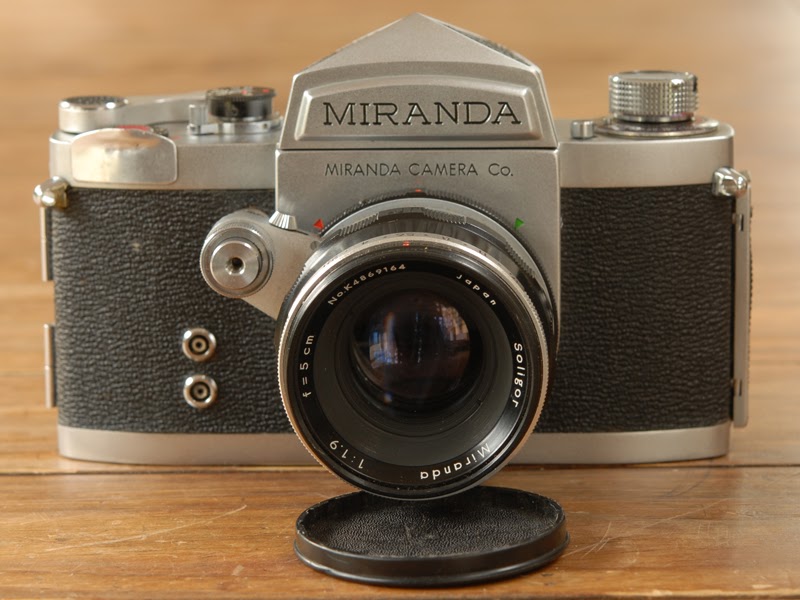

Looks like a major update over Miranda #1 with non-rotating(?) shutter speed dial and auto-reset film counter!
I see no evidence of this carried away phenomenon you mention at all...It's possible that I got a bit carried away when film camera prices were lower.
View attachment 185528
Uh thanks, I've since had to remind myself that even $50 for a camera is a lot of money if I keep compulsively buying them. I wonder if there's some sort of 12-step program for cameraholism? I've managed to keep myself "dry" since 6/2021 but had a minor stumble last month when my mom gifted me with her old Canon Sure Shot 70 Zoom.I see no evidence of this carried away phenomenon you mention at all...
Especially not the two Alpas.
My Leica IIIf, (w/o self-timer) was stolen from me back in the mid-'60s only a few months after I bought it; I only got to take a couple of rolls of film.Oh that thing (what was the brand again?). Leica 3F circa mid-1950s. Screw mount "Barnack" Leicas can still sometimes be had at modest cost, though the added expense of having one restored to fully operational status can easily quadruple that. But at the time I had just started fussing around with film cameras again, and this would not have been the best setup on which to learn DIY camera repair.
Branded mouse mat came courtesy of friendly Leica rep - they really did have some of the best promotional swag: Hardbound books, calendars, mouse mats, shirts, not-cheap pens, keychains, and hard-to-get magnifiers.
Some folks grumble about the ergonomics of the Barnack cameras, and while the design was dated by the 1950s, by prewar standards, it was a miniature marvel. I like the size and shape, and find it a pleasant user. I guess the professional's prewar choice in 35 mm cameras would have been the Zeiss Contax, but Contax II is a larger, heavier camera with ergonomic peculiarities of it's own.
View attachment 185442
I had a Contax point-n-shoot in the late 90's, loved it. It's now lost in my garage somewhere.The mirrorless design thread seems to be morphing into a discussion of classic cameras, so it might be nice to have a thread for the subject.
I love classic cameras. To be clear, I'm not going to try and claim classic film cameras are better, and I'm certainly not going to pretend I want to return to film photography other than as an occasional indulgence. I love digital photography and my personal opinion is that the advantages are so compelling it would be crazy to even have the argument. But, what I will say is I love classic film cameras and although I am under no illusions over what is better I like classic cameras more than digital I guess it's like an automotive enthusiast recognizing that something like a Tesla 3 blows classic cars apart in every way except styling but still wanting something like an E-Type, classic Mustang, Lamborghini Miura, Ferrari 275 etc. I love the tactile feel, I love the sense of mechanical precision and I just find something wonderful, especially truly mechanical cameras like the Nikon FM, Olympus OM-1, CONTAX S2 etc. My 35mm system was CONTAX, and I've never owned anything which came close to the sense of pure quality exuded by the RTS iii.
So in case anyone shares my love of old things (and please, I'm not trying to start an argument that old film cameras are better - they're not) here is my top 5:
1. CONTAX RTS iii - this one is not so classic as it was a 1990's design and with the exception of being manual focus was a very advanced design and fully featured. It had a vacuum film plate, a fast built in motor-drive, mirror lock up, spot meter, built in vertical grip, data back and a wonderful viewfinder. The real selling points though were the Carl Zeiss lenses and the build quality and tactile feel, it had a sense of absolute quality of a sort which is very rare.
2. Olympus OM-1, the Olympus OM system was a true design classic. Very compact, lightweight and with wonderful build and handling. Putting the shutter speed selection around the lens mount was one of those ideas that after I'd used it I couldn't help wondering why nobody else did it as it worked really well. The matching Zuiko lenses were superb and the OM system was extremely comprehensive. The OM-1 was a true mechanical camera, the lightmeter was battery powered but if the battery died the rest of the camera was unaffected. The OM-1 wasn't the best of the OM line (I'd say that was the OM-4) but as the daddy of the line and as a classic design it is probably my favourite. The only criticism I have is the plastic flash hot shoe which after a while goes brittle and breaks apart from tightening. As an aside, the OM-1 was originally the Olympus M-1 but Leica weren't happy about them calling it the M system.
3. Nikon FM/FM2, probably the ultimate 35mm SLR cliché as it was a camera that survived in the Nikon catalogue as the original FM and later FM2 for years and even had a final hurrah as a mechanical - electronic hybrid FM3. Nikon never bettered the industrial design in my opinion, the things were pretty much bomb proof, the elegant simplicity was just perfect and of course it was supported by an immense system. A story, in my youth I worked for British Antarctic Survey and the Nikon FM2 was their standard camera as experience had led them to value its utter dependability in extremely challenging conditions. It was the only camera body they had any confidence in, which interestingly included the more expensive Nikon F professional series bodies. Someone once started a rumour that Nikon had ended production (prematurely) and they rushed out to buy any FM2's in stock in the local camera stores so they'd have a plentiful supply for many years into the future.
4. Pentax LX, this one is a bit of an odd one as the LX was the great forgotten high end 35mm camera. The LX was Pentax's contender in a market segment dominated by the Nikon F2/F3, Canon F1/new F1 and with the Olympus OM-1/2 then OM-3/4 enjoying a fair bit of acclaim. The LX shared the exchangeable prism feature with the Nikon F family and Canon F1 but was a much smaller, lighter camera and was closer to the slim and light OM family than the battlecruiser like Nikon and Canon bodies. Despite being compact and light it lost nothing to Nikon and Canon in terms of build quality and durability (if anything I always thought the Pentax was the benchmark against the others should have been assessed). While Pentax enjoyed a high profile in the medium format professional segment their 35mm contender was always seen as the poor relation of more successful rivals.
5. Olympus OM-3, this was the mechanical sister camera to the OM-4 and the claim to fame of these cameras was what was for the time an extremely advanced light metering system with multi-spot metering and highlight/shadow functions. It all sounds a bit primitive today, but at the time it was transformational and if people are willing to make the effort to learn how to use multi-spot metering it remains a superb system. As with older OM cameras the OM-3 was compact, superbly built and a joy to hold. This is my personal preference, if looked at logically the OM-4 was the better camera but I like the mechanical OM-3.
I offer an honorable mention, the CONTAX AX. The AX is unique, I know the word "unique" is devalued by overuse and most things touted as unique are anything but, the CONTAX AX really was something special. As AF took over the market Zeiss wouldn't build AF lenses for Yashica/CONTAX despite Japan being desperate to move CONTAX into AF. Without the Zeiss lenses CONTAX was stuck (Yashica developed its own AF SLR, the 230). Thinking laterally, CONTAX questioned whether if they couldn't use the lens to auto-focus, could they move the film plane instead, the result was the AX. The precision needed to make such a system work speaks volumes for the precision and production quality standard that CONTAX worked to, it offered AF using manual focus lenses. The body was pretty similar to the RTS iii (though it lost some of the higher end features of the RTS iii) but the extra depth needed to accomodate a moving film plane made it a bulky body. The AF couldn't match competing Canon EOS or Nikon AF bodies but it did function, and the focusing was much quicker and more accurate than I would ever get close to focusing manual. The CONTAX AX was a truly remarkable achievement and one of those things that if looked at logically was a futile attempt to re-invent a wheel which didn't need to be re-invented (AF), but which was glorious. Sadly, Zeiss's refusal to make AF lenses until it was far too late with the CONTAX N system left the brand up the proverbial without a paddle.
There are people who can service those electromechanical marvels of the 1990s - 00s but the level of complexity is nothing to sneeze at:Something interesting is that older classic cameras seem to be more in demand than more modern types. Good examples of the Nikon FM2 seem to command significantly higher prices than the F4, good examples of the CONTAX RTS and RTS ii seem no cheaper than the RTS iii, you can find really nice Canon T90s for peanuts etc.
Part of this maybe that the sort of people interested in classic cameras tend to like older cameras and the sort of dip in which products are seem as old and past it by most of the market but not yet seen as'classic' by the sort of people interested in old stuff. Part of it may be that if you want a pared back experience without electronic aids doing everything for you then get a basic camera rather than something which is essentially a modern camera but with film rather than digital. And part of it maybe that whereas there are people who can service and repair mechanical and electro-mechanical cameras, if the electronic modules and various automated functions of a model like the T90 or RTS iii blow then it is probably junk. That's what puts me off buying a CONTAX AX, you can find nice ones for peanuts but I am not sure anyone has the parts and expertise to work on its AF system.
Wow, are you in the habit of storing easy $500 sale items in your garage?I had a Contax point-n-shoot in the late 90's, loved it. It's now lost in my garage somewhere.
